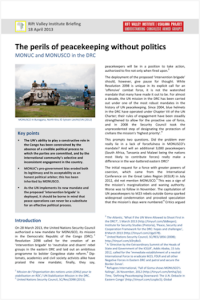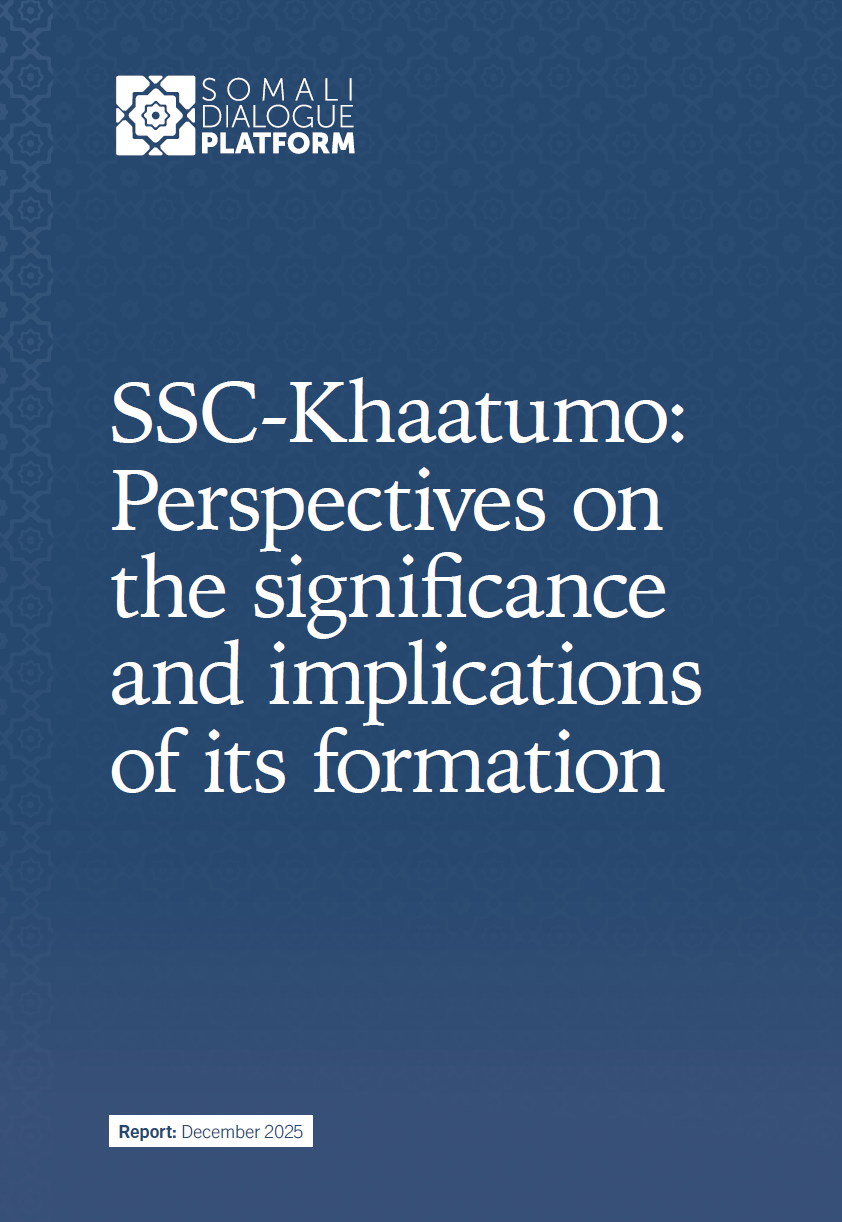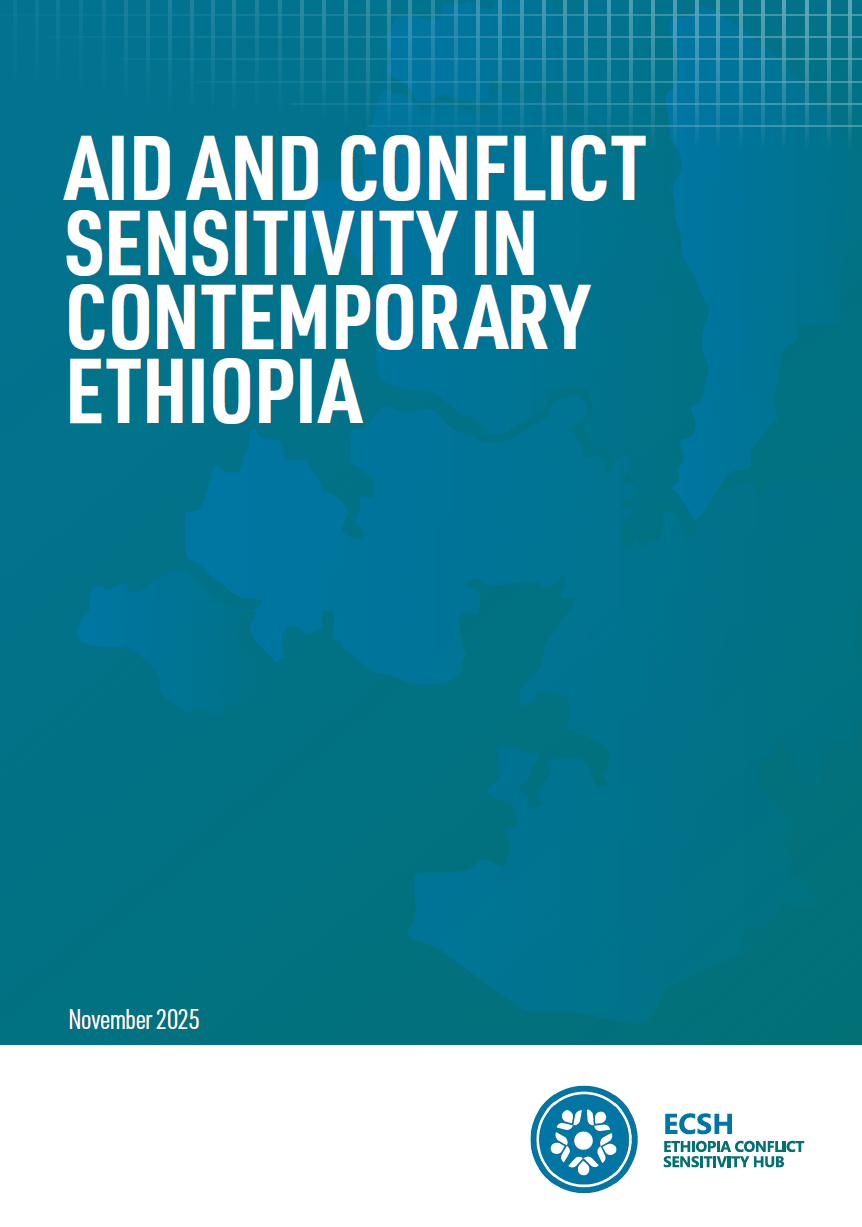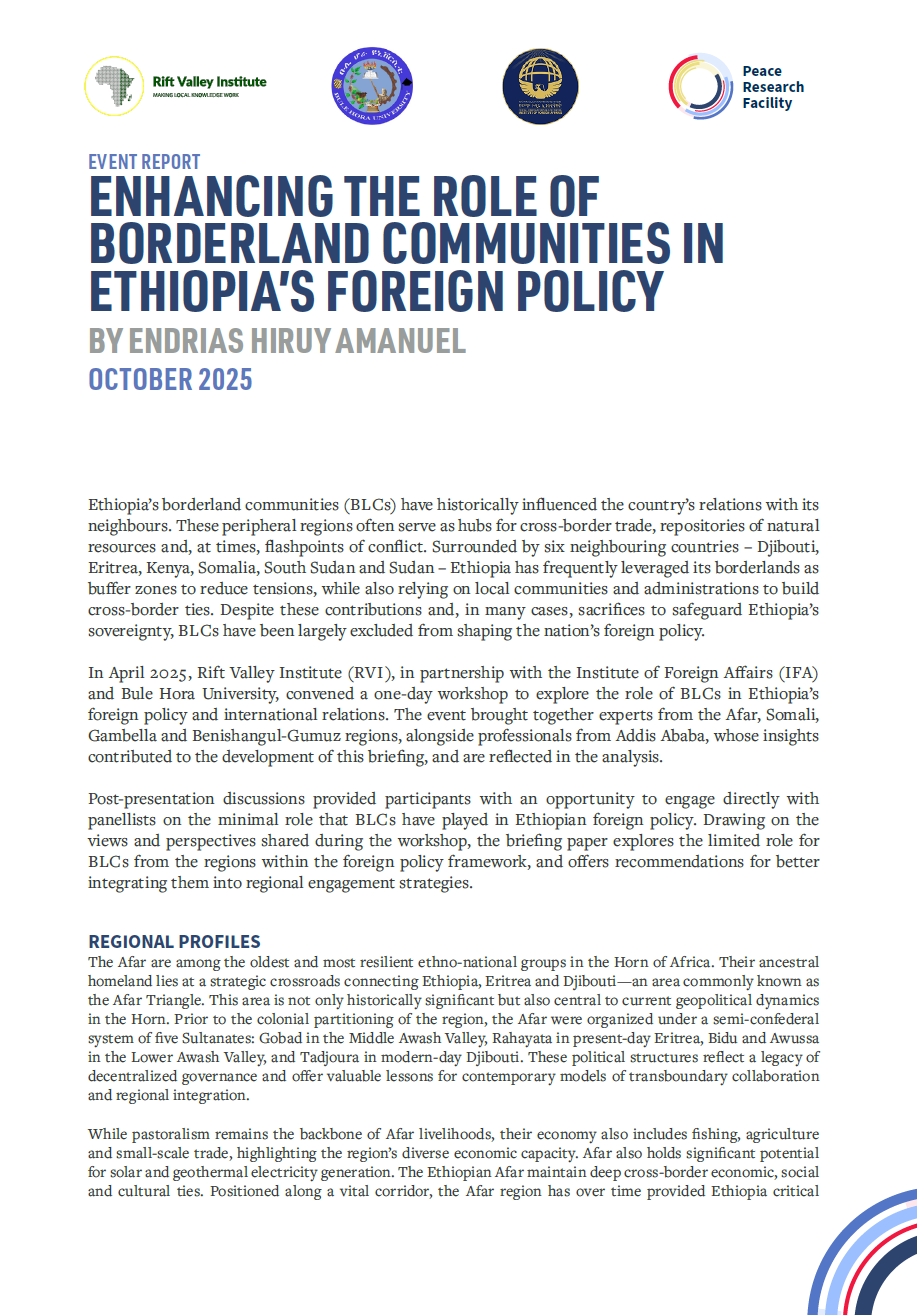This Usalama Briefing Paper sets out the history of UN involvement in the eastern DRC and analyses the challenges that continue to face the mission, even as it prepares to deploy a new intervention brigade, charged with neutralizing and disarming rebel groups and bolstering Congolese state reform. ‘The UN’s ability to play a constructive role in the Congo,’ Paddon notes, ‘has been constrained by the absence of a credible political process to which the parties are committed, and by the international community’s selective and inconsistent engagement in the country.’
Read the full briefing below or download as a PDF.
Key points
-
The UN’s ability to play a constructive role in the Congo has been constrained by the absence of a credible political process to which the parties are committed, and by the international community’s selective and inconsistent engagement in the country.
-
MONUC’s pro-government bias eroded both its legitimacy and its acceptability as an honest political arbiter; this has been inherited by MONUSCO.
-
As the UN implements its new mandate and the proposed ‘intervention brigade’ is deployed, it should be borne in mind that peace operations can never be a substitute for an effective political process.
Introduction
On 28 March 2013, the United Nations Security Council authorized a new mandate for MONUSCO, its mission in the Democratic Republic of the Congo (DRC).[1] Resolution 2098 called for the creation of an ‘intervention brigade’ to ‘neutralize and disarm’ rebel groups in the eastern DRC and laid out an ambitious programme to bolster Congolese state reform.[2] Dip-lomats, academics and civil society activists alike have praised the new mandate; finally, they say, peacekeepers will be in a position to take action, authorized to fire not only when fired upon.[3]
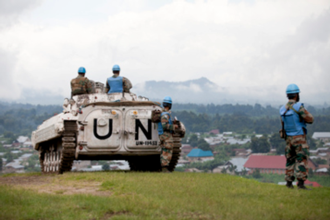 The deployment of the proposed ‘intervention brigade’ should, however, give pause for thought. While Resolution 2098 is unique in its explicit call for an ‘offensive’ combat force, it is not the watershed mandate that many have made it out to be. For almost a decade, the UN mission in the DRC has been carried out under one of the most robust mandates in the history of UN peacekeeping. Since 2004, blue helmets in the DRC have operated under Chapter VII of the UN Charter; their rules of engagement have been steadily strengthened to allow for the proactive use of force, and in 2008 the Security Council took the unprecedented step of designating the protection of civilians the mission’s ‘highest priority’.[4]
The deployment of the proposed ‘intervention brigade’ should, however, give pause for thought. While Resolution 2098 is unique in its explicit call for an ‘offensive’ combat force, it is not the watershed mandate that many have made it out to be. For almost a decade, the UN mission in the DRC has been carried out under one of the most robust mandates in the history of UN peacekeeping. Since 2004, blue helmets in the DRC have operated under Chapter VII of the UN Charter; their rules of engagement have been steadily strengthened to allow for the proactive use of force, and in 2008 the Security Council took the unprecedented step of designating the protection of civilians the mission’s ‘highest priority’.[4]
This prompts two questions. Did the problem ever really lie in a lack of forcefulness in MONUSCO’s mandate? And will an additional 3,000 peacekeepers (South Africa, Tanzania and Malawi being the nations most likely to contribute forces) really make a difference in the war-battered eastern DRC?
The initial request for a force with greater powers of coercion, which came from the International Conference on the Great Lakes Region (ICGLR) in July 2012, did not mention MONUSCO.[5] This was a sign of the mission’s marginalization and waning authority. Worse was to follow in November. The capitulation of UN peacekeepers to M23 rebels outside Goma sparked widespread condemnation and provoked speculation that the mission’s days were numbered.[6] Critics argued that MONUSCO had little to show for 13 years of UN involvement and the expenditure of over 10 billion dollars.[7] Violence in the eastern DRC continues un-abated, with mortality levels similar to those experienced at the peak of the Second Congo War (1998-2003). Human rights protection is illusory for many, if not most, Congolese. Since holding landmark elections in 2006, the country has dropped 20 places in the UNDP development ranking to claim the dubious accolade of being the world’s least developed state.[8]
In analysing the history of UN peacekeeping in the DRC, this paper spans the period from the creation of MONUC in 1999, through its evolution into MONUSCO, to the present day.[9] The mission’s lacklustre per-formance has often been blamed on insufficient resources and the unwillingness of its peacekeepers to use force. While these factors are important, they are of lesser significance than the deeper strategic and political dynamics.
The UN’s ability to play a constructive role in the DRC has been constrained by the absence of a credible political process to which the parties are committed, and by the international community’s selective and inconsistent engagement in the country. Without progress on either of these fronts, the deployment of a new intervention brigade will be yet another palliative response to the DRC’s deep-seated political challenges.
MONUC’s inception (1999-2002)
The UN Mission in the Democratic Republic of the Congo (MONUC) had a difficult start. Deployed in 1999 to oversee the implementation of the Lusaka Ceasefire Agreement, the role prescribed for the UN in the agreement—and reflected in its mandate—was impracticable. The parties to the agreement had no intention of honouring their commitments, opting instead to hold out for what the International Crisis Group called ‘a return on their investment’ in the Second Congo War.[10]
The fighting continued unabated, and MONUC was actively obstructed from carrying out its mandate. In the capital, President Laurent Kabila initially refused to meet the Secretary General’s Special Representative and placed severe restrictions on MONUC’s freedom of movement in areas under his control. In other parts of the country, MONUC helicopters were attacked by fighters loyal to the Mouvement de libération du Congo (MLC, Congo’s Liberation Movement) armed group, and its forces were denied access by another armed group, the Rassemblement congolais pour la démocratie (RCD, Congolese Rally for Democracy).
MONUC: Facts and figures
Duration: 30 November 1999-30 June 2010
Strength: Increased from 5,537 troops + 500 military observers in February 2000 to 20,586 uniformed personnel in June 2010
Fatalities: 161
UN Security Council Resolutions: 1291 (24 February 2000); 1565 (1 October 2004); 1797 (30 January 2008); 1856 (22 December 2008)[11]
Amid such belligerency and in instances when civilians were imperilled, the mission assumed a passive role. It was further hamstrung by bitter divisions within the Security Council itself over Great Lakes policy. For example, when over 180 people were massacred in 2002 in Kisangani, the capital of Orientale Province, the peacekeepers stationed in the area did not use force to halt the attacks or send patrols to deter abuses.[12] During the first three years of its mission, MONUC remained, in the words of one official, ‘little more than a shadow over the horizon’.[13]
Transition (2003-6)
The signing of the Global and Inclusive Agreement—the peace agreement that ended the Second Congo War and led to a Transitional Government in 2003—prompted a radical transformation of the mission. Galvanized by the prospect of peace and democratic elections, international commitment to the DRC deepened and a semblance of donor unity emerged.
This resulted in both greater resources for the mission and the creation of new donor coordination bodies. Of particular significance was the Comité International d’Accompagnement de la Transition (CIAT, International Committee in Support of the Transition), which was chaired by MONUC and was the world’s main liaison mechanism with the Transitional Government. It met regularly throughout this period and played an important role in preventing the Transition from derailing at several critical junctures.
Despite this greater engagement by MONUC and the international community, violence continued. The political calculus that underpinned the Transition was skewed in favour of President Joseph Kabila in Kinshasa. This alienated certain groups, in particular the Rwandan-backed RCD, which faced a precipitous decline in power after controlling nearly two-thirds of the country throughout much of the Second Congo War. During the Transition, this led to armed resistance and sowed the seeds for future bloodshed, including the creation of the rebel Congrès national pour la defense du peuple (CNDP, National Congress for the Defence of the People) in late 2006—which was the progenitor of today’s M23 movement.[14]
MONUC’s responses to such recalcitrant behaviour, and the violence directed at civilians, varied significantly. On the one hand, UN peacekeepers (with backing from the Security Council) engaged in some of the most combative enforcement action in the UN’s history during the Transition period. This was most visible in Ituri district, where from 2005-6 the mission employed a carrot-and-stick approach to persuade rogue militias that were not party to the Transition agreement to disarm, using considerable force if they failed to do so. At the peak of this activity, MONUC conducted an average of 15 operations per day, most of which were supported by attack helicopters. The operations were widely deemed a success and led to the demobilization of roughly 18,000 militia fighters.[15]
In other respects, however, the mission was noticeably passive during this period. There was an unwillingness to confront either militarily and politically those signatories who were in violation of the agreement or who directly threatened civilians. Such recalcitrant elements were overwhelmingly those associated with the former RCD rebel group, including Laurent Nkunda. Rwandan-trained and battle-hardened, they were more capable fighters than the militias in Ituri, and therefore the use of force against them posed greater risks. MONUC’s political leadership was reluctant to take action for fear that it would jeopardize the Transition and the scheduled elections.
This equivocation was most evident in Kisangani in 2002, in Walungu in 2003, and in Bukavu in 2004, as hundreds of civilians died in attacks perpetrated by the RCD or ex-RCD. While this violence did not ultimately derail the Transition, it presaged future unrest as the root causes of instability in the DRC continued to go unaddressed.
From MONUC to MONUSCO (2007-present)
Landmark elections in 2006 ushered in a new era of peacekeeping and a recalibration in donor relations. MONUC was tasked with supporting Kabila’s nascent government: an approach advocated by the DRC’s foreign partners, who now competed to win favour with the new administration in Kinshasa, often in the hopes of securing mining contracts.[16]
Crucially, when violence once again engulfed the country’s eastern region, MONUC did little to promote political engagement with the underlying causes of the continuing strife. Despite all the evidence, a post-conflict mindset had taken hold, and MONUC, as well as international donors, pursued a more militarized approach—stipulated by the Kabila administration in its bid to shore up and centralize its power following the election. The mission formulated an ambitious stabilization plan and, in a series of military operations conducted jointly with the national army, supported efforts to quash those armed groups which posed the greatest challenge to the government’s authority.
MONUSCO: Facts and figures
Duration: 1 July 2010 –
Strength: Decreased from initial authorization of 22,016 uniformed personnel in June 2010 to 19,160 on 28 February 2013
Fatalities: 55
UN Security Council Resolutions: 1925 (28 May 2010); 2053 (27 June 2012); 2098 (28 March 2013)[17]
MONUC’s pro-government bias eroded both its legitimacy and its acceptability as an honest broker. In many areas, the state, which the mission sought to stabilize, was itself perceived by the population as the primary security threat.[18] Congolese government institutions lack authority, are corrupt, and frequently prey on the population. Efforts by the mission to reform these institutions gained little traction, and the UN was sidelined from the various flawed peace agreements negotiated between the parties them-selves.
Of these, the 2008 backroom deal brokered between Kigali and Kinshasa—extolled by many donors as a historic rapprochement—had the greatest impact on the mission’s legitimacy.[19] As part of the deal, CNDP fighters were integrated into the national army, the Forces armées de la République démocratique du Congo (FARDC, Armed Forces of the Democratic Republic of the Congo). Several large-scale offensives were launched against the Forces démocratiques de liberation du Rwanda (FDLR, Democratic Forces for the Liberation of Rwanda), a largely Rwandan Hutu rebel group, and against remaining Congolese rebel groups in the east.
These operations were conducted jointly by the FARDC and, first, Rwandan forces, as Operation Umoja Wetu (Our Unity), then, with significant support from MONUC, as Operation Kimia (Peace) II and Operation Amani Leo (Peace Today). During these operations, the FARDC, the UN’s operational partner, was responsible for widespread human rights abuses and the killing of hundreds of civilians.[20] This violence prompted the mobilization of several new armed groups in the east.
As criticism of the government by human rights groups mounted over these operations, President Kabila responded by calling for the mission’s withdrawal in 2010. The UN Security Council intervened, negotiating a continued deployment in return for its on-going military support for FARDC operations in the east. The mission was relabelled MONUSCO, with the ‘S’ indicating that stabilization was to be its focus. Yet again, however, the political compromises necessary to bring about long-term stability were never made, and the mission was reduced to an increasingly technical role, aligned ever more closely—and compromisingly—with Kabila’s government.
The 2011 elections were marred by frequent irregularities and deadly violence, but MONUSCO was relatively mute in its criticism, and donors chose not to contest the outcome. Instead, they attempted to use Kabila’s perceived weakness to press for change. To date, however, little headway has been made on institutional reform in the DRC, even as military operations and so-called stabilization activities continue. Roads are paved, buildings are erected—but the security situation in the east continues to deteriorate.
Conclusion
As the UN implements its new mandate and the proposed intervention brigade is deployed, it is worth remembering that peace operations can never be a substitute for an effective political process––an old adage that was invoked in the seminal Brahimi Report of 2000 but which seems to have been forgotten in the context of the DRC.[21]
In times of political and military crisis, the world looks to the UN Security Council for a response. Military solutions, such as the intervention brigade, or ever-stronger protection mandates, are politically expedient. They give the appearance of doing something, even as more intractable issues are shelved. Increased military protection in DRC is at best a temporary solution, one that, in MONUSCO’s case, has not only been largely ineffective but has also undermined its legitimacy.
Peacekeepers will never be able to protect every civilian, or eradicate the armed groups in the Kivus. To assume such responsibilities sets up MONUSCO, once again, for failure. The international community, like the parties themselves, cannot fight their way out of the Congo’s persistent crises.
[1] Mission de l’Organisation des nations unies (ONU) pour la stabilisation en RDC / UN Stabilization Mission in the DRC.
[2] United Nations Security Council, SC/Res/2098 (2013).
[3] The Atlantic, ‘What if the UN Were Allowed to Shoot First in the DRC?’, 1 March 2013 (http://tinyurl.com/bb8eqan); Institute for Security Studies (Pretoria), ‘Peace, Security and Cooperation Framework for the DRC: hopes and challenges’, 8 March 2013 (http://tinyurl.com/clga578).
[4] United Nations Security Council, SC/RES/1856 (2008); http://tinyurl.com/d3ry8o3.
[5] A ‘Directive by the Extraordinary Summit of the Heads of State and Government of the ICGLR’, Addis Ababa, 15 July 2012, called for the ‘immediate establishment of a neutral International Force to eradicate M23, FDLR and all other Negative Forces in Eastern DRC and patrol and secure the Border Zones’.
[6] Refugees International, ‘Fall of Goma shows MONUSCO’s failings’, 26 November, 2012 (http://tinyurl.com/bmhaj7p); Time, ‘Defining Peacekeeping Downward: The U.N. Debacle in Eastern Congo’ (http://tinyurl.com/czspbc5); Global Observatory, ‘Will MONUSCO fall with Goma?’, 3 December 2012 (http://tinyurl.com/c9frjbz).
[7] The approved budget for MONUSCO for the period 1 July 2012-30 June 2013 is $1,402,278,300; UN, ‘MONUSCO Facts and Figures’ (http://tinyurl.com/6wehkkh). Total expenditure for the entire duration of the MONUC mission (6 August 1999-30 June 2010) was $8,734,751,000; UN, ‘MONUC Facts and Figures’ (http://tinyurl.com/cq7yy9n).
[8] UN Development Programme, ‘Human Development Index Report’ (New York, UNDP, 2006 and 2011).
[9] Mission de l’Organisation des Nations unies en République démocratique du Congo / UN Mission in the DRC.
[10] International Crisis Group (ICG), ‘Scramble for the Congo: Anatomy of an Ugly War’ (Nairobi/Brussels, 2000), p. 66.
[11] UN, ‘MONUC Facts and Figures’.
[12] Human Rights Watch (HRW), ‘War Crimes in Kisangani: The Response of Rwandan-backed Rebels to the May 2002 Mutiny’ (New York, 2002); http://tinyurl.com/cbcs736.
[13] Nicholas Stockton, ‘Humanitarianism Bound: Coherence and Catastrophe in the Congo 1998-2002’ (unpublished study, Centre for Humanitarian Dialogue, 2003), p. 39.
[14] Jason Stearns, From CNDP to M23: The Evolution of an Armed Movement in the Eastern Congo (London: Rift Valley Institute, 2012).
[15] ICG, ‘Congo: Four Priorities for a Sustainable Peace in Ituri’, 13 May 2008, p. 32 (http://tinyurl.com/2wuk2ob); Tsjeard Bouta, ‘Assessment of the Ituri Disarmament and Community Reinsertion Program (DCR)’, May 2005, p. 13 (http://tinyurl.com/bol38cw).
[16] ICG, ‘Congo: Consolidating the Peace’, 5 July 2007, p.3 (http://tinyurl.com/2fooxyo).
[17] UN, ‘MONUSCO Facts and Figures’.
[18] Emily Paddon and Guillaume Lacaille, ‘Stabilizing the Congo,’ University of Oxford, Refugee Studies Centre Policy Brief No. 8, 2011; http://tinyurl.com/cjdv6ff.
[19] ICG, ‘Congo: Five Priorities for a Peacebuilding Strategy’, 11 May 2009; http://tinyurl.com/curcqgk.
[20] HRW, ‘You Will Be Punished: Attacks on Civilians in Eastern Congo’ (New York, HRW, 2009; http://tinyurl.com/ckl9es7) and ‘DR Congo: Civilian Cost of Military Operations is Unacceptable’, (New York, HRW, 13 October 2009; http://tinyurl.com/cxhn7kw).
[21] United Nations, A/55/305-S/2000/809 (2000), ‘Report of the Panel on United Nations Peace Operations’ (‘Brahimi Report’); http://tinyurl.com/82jujnh.

